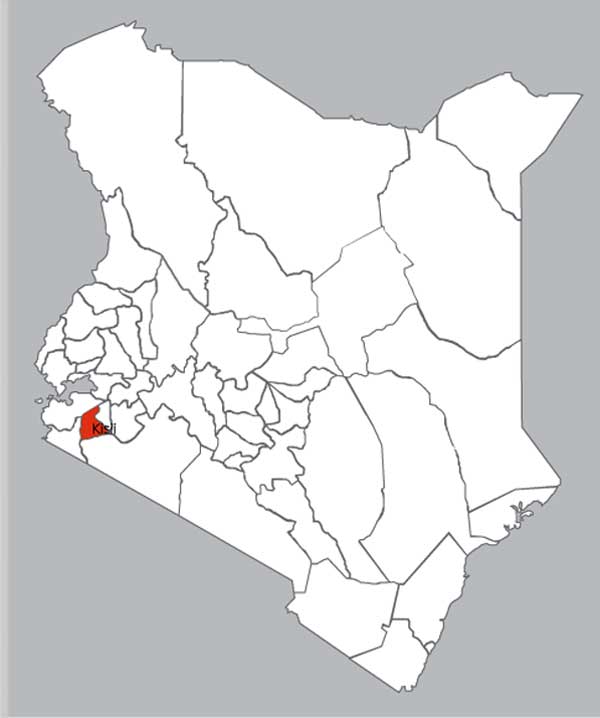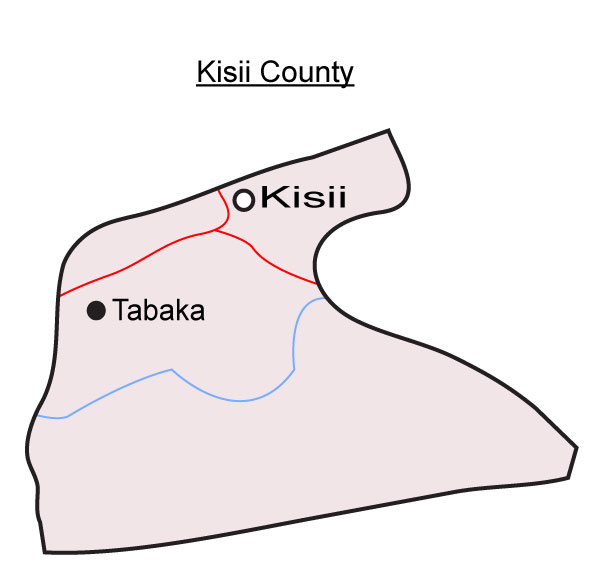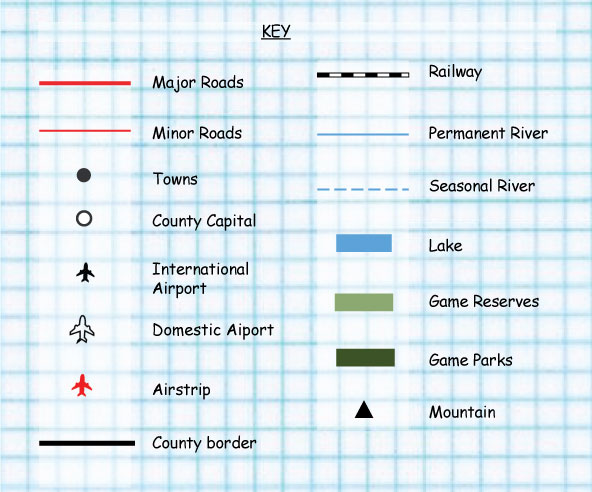Kisii County
Introduction
Kisii County is one of the forty seven counties of Kenya. It shares common borders with Nyamira County to the North East, Narok County to the South and Homabay and Migori Counties to the West.
The County lies between latitude 00 30’ and 100 South and longitude 340 38’ and 350 East.
It covers an area of 1,302km2, a population of 1,152,282 people as per the 2009 census.

Constituencies
It consist of 8 constituencies
- Bobasi
- Bonchari
- Bomachoge Chache
- Bomachoge Borabu
- Kitutu Chache North
- Kitutu Chache South
- Nyaribari Chache, Nyaribari Masaba
- South Mugirango
Physical features
Rivers
Hills
- Keboye hills
- Hills Manga
- Sameta Hills
- Nyacheki Hills
- Igorera hills
- Ibencho Hills
- Taracha Hill
- Intamocha
Plains
Importance of physical features
- The county receives revenue through tourist attraction.
- They provide a natural habitat for animals’, birds and fish in the area.
- Rivers are a source of water.
- Hills are used a worship places.
Main types of natural vegetation
Importance of vegetation
- It contributes to the weather pattern
- Forests are where wild animals live
- They prevent soil erosion
Map of the Distribution of physical features


People and population
language groups
- It is inhabited by the kisii people. They are the most dominant language group in the area. Others are the kikuyu, the akamba and the Luo who are also present in the area
Areas of high population density
- Mosocho comprises of 11.47% of the population in the county making it the most populated division.
Areas of low population density
- Igonga division is least populated with 1.79% of the entire population.
Social realations and cultural acitivty
The traditional way of life of the people
Food
- Traditional foods grown by the Kisii people include maize, millet, sorghum, yams, pumpkins and green vegetables. Bananas are a popular fruit in Kisii land and are often found growing along the constantly flowing riverbeds.
Dressing
- The traditional dress of the Kisii is made up of banana leaves and cowhides.
Songs and dances
Traditional medical practices
- Chosen elderly women and men in the community were responsible for treatment as they had the know how than the rest. It was an important title to be a medicine man.They used plants which they took a lot of their time to look for in the forest mostly
The ceremonies and festivals held
Ceremonies
It was common to name a child after a deceased person from the father's clan for the first name, and one from the mother's clan for the second name. Children may also be named for a recent event, such as the weather at the time of the child's birth. Some common names refer to the time of migrations. For example, the woman's name Kwamboka means "crossing a river."
http://www.everyculture.com/wc/Japan-to-Mali/Gusii.html#ixzz4XFKnw9WA
Circumcision of boys at around age of 10 as a rite of passage without anesthesia is common among the kisii. This ritual takes place annually in the months of November and December followed by a period of seclusion during which the boys are led in different activities by older boys, and is a great time of celebration indeed for families and communities at large.
Festivals
It was done before circumcision. Songs and dances were practiced to mark a successful harvest.
The kisii play a large bass lyre called Obokano.
Dance and folks dances were performed after harvest or during naming of a child and also during evenings to educate the young on community morals.
Resources and economic activities
Agriculture
Main cash crops and food crops
- maize, bananas, beans, potatoes, tea, sugarcane, coffee and horticultural crops
The areas where the cash crops are grown
The types of livestock kept
Fishing
Areas where fishing is practiced
- Fish ponds are largely distributed all over the county
Forestry
Major forests
- Nyangweta
- Ritumbe
- Ndonyo
- Nyansembe forests in Gucha South district
Wildlife and Tourism
Type wildlife
The game parks and reserves
The major tourist attractions
- Nyangweta Forest
- Ritumbe Forest
- Ibencho
Traditional industries
Traditional industries
- Soapstone carvings
- Basketry and pottery
- Agriculture
Trade
Major trading centers
- Mosocho division is the main trading place in this area.
- Kisii town.


